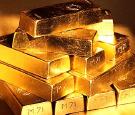Introduction To Matter Practice Questions! Quiz
(79).jpg)
.
- 1.
Which type of matter consists of two or more substances that are NOT chemically combined?
- A.
Atoms
- B.
Mixtures
- C.
Elements
- D.
Compounds
Correct Answer
B. MixturesExplanation
Mixtures consist of two or more substances that are not chemically combined. In a mixture, the substances retain their individual properties and can be physically separated. This is different from compounds, which are formed when elements chemically combine and lose their individual properties. Atoms are the basic building blocks of matter, while elements are pure substances made up of only one type of atom. Therefore, the correct answer is mixtures.Rate this question:
-
- 2.
Substances that CANNOT be broken down into other substances are called __________.
- A.
Compounds
- B.
Liquids
- C.
Mixtures
- D.
Elements
Correct Answer
D. ElementsExplanation
Elements are substances that cannot be broken down into other substances. They are the simplest form of matter and are made up of only one type of atom. Unlike compounds, which are made up of two or more different elements chemically combined, elements cannot be further broken down by chemical means. Liquids, mixtures, and compounds can all be broken down into simpler substances, but elements cannot.Rate this question:
-
- 3.
In chemistry, elements are represented by _________________.
- A.
Building blocks
- B.
Formulas
- C.
Symbols
- D.
Ratios
Correct Answer
C. SymbolsExplanation
In chemistry, elements are represented by symbols. These symbols are usually one or two letters that are derived from the element's name. For example, the symbol for carbon is C, and the symbol for oxygen is O. These symbols are used to write chemical formulas and equations, and they provide a concise way to represent and communicate information about elements and compounds.Rate this question:
-
- 4.
The measurement of how much matter an object contains is its _________________.
- A.
Density
- B.
Weight
- C.
Mass
- D.
Volume
Correct Answer
C. MassExplanation
Mass is the measurement of how much matter an object contains. It is a fundamental property of an object and is independent of its location or the force acting on it. Density refers to the mass per unit volume of a substance, weight is the force of gravity acting on an object, and volume is the amount of space occupied by an object. Therefore, mass is the correct answer as it directly relates to the amount of matter in an object.Rate this question:
-
- 5.
Which of the following is NOT true of a compound?
- A.
It contains elements combined in a specific ratio.
- B.
It is made up of two or more elements.
- C.
It is made of substances that keep their individual properties.
- D.
It contains elements that are chemically combined.
Correct Answer
C. It is made of substances that keep their individual properties.Explanation
A compound is made up of two or more elements that are chemically combined in a specific ratio. When elements combine to form a compound, they lose their individual properties and form new substances with different properties. Therefore, the statement "It is made of substances that keep their individual properties" is not true of a compound.Rate this question:
-
- 6.
The SI unit for mass is the ___________________.
- A.
Kilogram
- B.
Ounce
- C.
Liter
- D.
Pound
Correct Answer
A. KilogramExplanation
The SI unit for mass is the kilogram. The kilogram is the base unit of mass in the International System of Units (SI). It is defined as the mass of the International Prototype of the Kilogram (IPK), a platinum-iridium cylinder kept at the International Bureau of Weights and Measures. The kilogram is widely used in scientific and everyday contexts for measuring the mass of objects.Rate this question:
-
- 7.
How would you calculate the density of an object?
- A.
Multiply its weight times its mass
- B.
Divide its weight by its volume
- C.
Divide its mass by its volume
- D.
Multiply its volume times its mass
Correct Answer
C. Divide its mass by its volumeExplanation
To calculate the density of an object, you need to divide its mass by its volume. Density is defined as the amount of mass per unit volume, so dividing the mass by the volume gives you the density value.Rate this question:
-
- 8.
What is the density of a block of wood with a volume of 10 cubic centimeter and a mass of 100 grams?
- A.
10 grams/cubic centimeter
- B.
100 grams/cubic centimeter
- C.
1 gram/cubic centimeter
- D.
10 cubic centimeters/gram
Correct Answer
A. 10 grams/cubic centimeterExplanation
The density of a substance is calculated by dividing its mass by its volume. In this case, the mass of the block of wood is given as 100 grams and the volume is given as 10 cubic centimeters. Therefore, the density can be calculated as 100 grams / 10 cubic centimeters, which simplifies to 10 grams/cubic centimeter.Rate this question:
-
- 9.
All elements are composed of extremely small particles called _______________.
- A.
Molecules
- B.
Atoms
- C.
Mixtures
- D.
Compounds
Correct Answer
B. AtomsExplanation
Atoms are the basic building blocks of all elements. They are extremely small particles that make up everything in the universe. Molecules, mixtures, and compounds are combinations of atoms, but atoms themselves are the fundamental units of matter.Rate this question:
-
- 10.
A group of atoms that are bonded together are called __________________.
- A.
Mixtures
- B.
Compounds
- C.
Elements
- D.
Molecule
Correct Answer
D. MoleculeExplanation
A group of atoms that are bonded together are called a molecule. Molecules can be made up of the same type of atoms or different types of atoms. They are the smallest units of a compound that retain the chemical properties of that compound. Molecules play a crucial role in various chemical reactions and interactions.Rate this question:
-
- 11.
What holds atoms together in a molecule?
- A.
Temperature
- B.
Chemical bonds
- C.
Gravity
- D.
Density
Correct Answer
B. Chemical bondsExplanation
Chemical bonds hold atoms together in a molecule. These bonds are formed when atoms share or transfer electrons to achieve a stable electron configuration. This sharing or transfer of electrons creates attractive forces between the atoms, keeping them bonded together in a molecule. Temperature, gravity, and density do not play a direct role in holding atoms together in a molecule.Rate this question:
-
- 12.
What technique did miners use to separate dirt from gold?
- A.
Heating along with charcoal
- B.
Electrolysis
- C.
Melting
- D.
Panning
Correct Answer
D. PanningExplanation
Miners used the technique of panning to separate dirt from gold. Panning involves swirling a mixture of dirt and water in a shallow pan, causing the gold particles to sink to the bottom while the lighter dirt is washed away. This method takes advantage of the density difference between gold and dirt, allowing miners to easily separate the valuable gold from the unwanted material.Rate this question:
-
- 13.
What does this diagram represent?
- A.
Molecules
- B.
An atom
- C.
An element
- D.
Nothing
Correct Answer
A. MoleculesExplanation
The diagram represents molecules. This is indicated by the fact that the other options - an atom, an element, and nothing - do not accurately describe the diagram. The diagram likely shows multiple atoms bonded together, forming a molecule.Rate this question:
-
- 14.
What does this picture represent?
- A.
A homogeneous mixture
- B.
An element
- C.
A heterogeneous mixture
- D.
A pure substance
Correct Answer
C. A heterogeneous mixtureExplanation
This picture represents a heterogeneous mixture. A heterogeneous mixture is a combination of different substances that are visibly distinct and not uniformly distributed throughout the mixture. In the picture, there are clearly different components that can be identified, indicating that it is not a homogeneous mixture where the components are evenly distributed. Additionally, it is not an element because an element is a pure substance made up of only one type of atom. Lastly, it is not a pure substance because a pure substance consists of only one type of substance and cannot be separated into other substances.Rate this question:
-
- 15.
What does this picture represent?
- A.
A pure substance
- B.
A mixture
- C.
A compound
- D.
None of the above
Correct Answer
A. A pure substanceExplanation
This picture represents a pure substance because it shows a single element or compound that is not mixed with any other substances. A pure substance has a uniform composition and distinct properties, which can be seen in the picture.Rate this question:
-
- 16.
Which of the following examples below represents a homogeneous mixture?
- A.
Salad dressing
- B.
A trash dump
- C.
Your closet
- D.
A glass of water
Correct Answer
D. A glass of waterExplanation
A glass of water represents a homogeneous mixture because it is a combination of water molecules that are uniformly distributed throughout the glass. In a homogeneous mixture, the components are evenly mixed at a molecular level, resulting in a uniform composition and appearance. In the case of a glass of water, the water molecules are evenly dispersed, making it a homogeneous mixture.Rate this question:
-
- 17.
What shows the ratio of elements in a compound?
- A.
A mixture
- B.
Element symbols
- C.
A formula
- D.
A compound
Correct Answer
C. A formulaExplanation
A formula shows the ratio of elements in a compound. In chemistry, a compound is made up of two or more different elements combined in a specific ratio. The formula of a compound provides information about the types of elements present and the number of atoms of each element in the compound. This allows scientists to understand the composition and structure of the compound. Therefore, a formula is the correct answer as it accurately represents the ratio of elements in a compound.Rate this question:
-
- 18.
Most matter occurs in the environment as _________________.
- A.
Elements
- B.
Compounds
- C.
Mixtures
- D.
Atoms
Correct Answer
C. MixturesExplanation
Matter in the environment is commonly found in the form of mixtures. A mixture is a combination of two or more substances that are physically combined and can be separated by physical methods. This is different from elements, which are pure substances made up of only one type of atom, and compounds, which are pure substances made up of two or more different types of atoms chemically combined. Therefore, mixtures are the most common form of matter found in the environment.Rate this question:
-
- 19.
The measure of the force of gravity on an object is called its _______________.
- A.
Mass
- B.
Length
- C.
Weight
- D.
Height
Correct Answer
C. WeightExplanation
Weight is the measure of the force of gravity on an object. It is different from mass, which is the amount of matter in an object. Weight depends on the gravitational pull of the planet or celestial body on which the object is located, whereas mass remains constant regardless of the location. Length and height are measurements of distance and do not relate to the force of gravity on an object.Rate this question:
-
- 20.
True or False -- The density of a substance varies with the samples of that substance.
- A.
True
- B.
False
Correct Answer
B. FalseExplanation
The density of a substance does not vary with different samples of that substance. Density is an intrinsic property of a substance and is defined as the mass per unit volume. It remains constant regardless of the size or amount of the substance being measured. Therefore, the statement that the density of a substance varies with the samples of that substance is false.Rate this question:
-
- 21.
The measurement of the amount of space an object takes up is its ______________.
- A.
Volume
- B.
Density
- C.
Formula
- D.
Mass
Correct Answer
D. MassExplanation
The measurement of the amount of space an object takes up is not its volume, density, or formula. The correct answer is mass. Mass refers to the amount of matter in an object and is typically measured in units such as kilograms or pounds. It is different from volume, which measures the amount of space an object occupies.Rate this question:
-
- 22.
A change in matter that produces new substances is called a _________________.
- A.
Physical change
- B.
Mental change
- C.
Chemical change
Correct Answer
C. Chemical changeExplanation
A change in matter that produces new substances is called a chemical change. This type of change involves the rearrangement of atoms or molecules, resulting in the formation of different substances with new chemical properties. Unlike physical changes, which only alter the physical state or appearance of a substance without creating new substances, chemical changes involve the breaking and forming of chemical bonds. Examples of chemical changes include combustion, rusting, and fermentation.Rate this question:
-
Quiz Review Timeline +
Our quizzes are rigorously reviewed, monitored and continuously updated by our expert board to maintain accuracy, relevance, and timeliness.
-
Current Version
-
Mar 20, 2023Quiz Edited by
ProProfs Editorial Team -
Sep 21, 2009Quiz Created by
Jpipkin1970
- Aeronautics Quizzes
- Aerospace Quizzes
- Agricultural Science Quizzes
- Astrology Quizzes
- Astronomy Quizzes
- Atom Quizzes
- Biochemistry Quizzes
- Biology Quizzes
- Biomechanics Quizzes
- Biostatistics Quizzes
- Biotechnology Quizzes
- Botany Quizzes
- Branches Of Science Quizzes
- Cytology Quizzes
- Easy Science Quizzes
- Ecology Quizzes
- Electrical Quizzes
- Embryology Quizzes
- Endocrinology Quizzes
- Engineering Quizzes
- Environmental Science Quizzes
- Epidemiology Quizzes
- Experiment Quizzes
- Forestry Quizzes
- Fossil Quizzes
- Gas Quizzes
- General Science Quizzes
- Genetics Quizzes
- Histology Quizzes
- Human Biology Quizzes
- Integrated Science Quizzes
- Invention Quizzes
- Library Science Quizzes
- Lighting Quizzes
- Liquid Quizzes
- Marine Biology Quizzes
- Microbiology Quizzes
- Molecular Biology Quizzes
- Nature Quizzes
- Neuroscience Quizzes
- Nuclear Science Quizzes
- Oceanography Quizzes
- Physics Quizzes
- Psychology Quizzes
- Science And Technology Quizzes
- Science Glossary Quizzes
- Science Knowledge Quizzes
- Science Practice Quizzes
- Scientific Method Quizzes
- Scientific Notation Quizzes
- Soil Science Quizzes
- Solar System Quizzes
- Solid Quizzes
- Zoology Quizzes
 Back to top
Back to top





